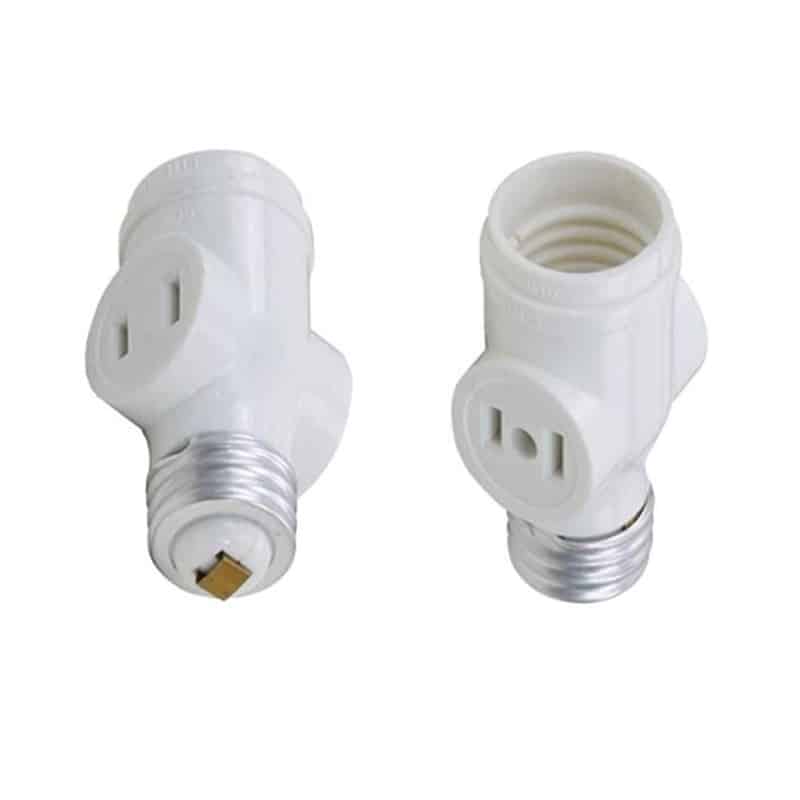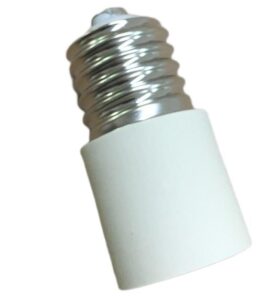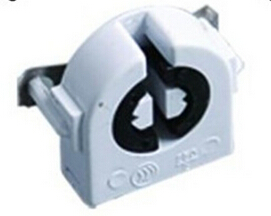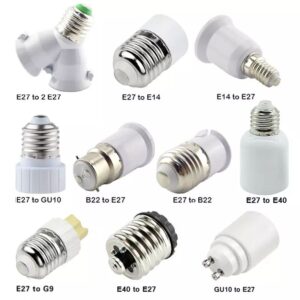No, using a 100W bulb in a socket rated for a lower wattage can cause overheating and damage to the socket.
This can lead to safety hazards, like electrical fires. Always match bulb wattage to the socket’s rating.
Let’s see what happens when you go over the wattage limit.

Can I put a 100W LED bulb in a 40W socket?
Using a 100W LED in a socket designed for a 40W bulb could be dangerous. While LEDs are more energy-efficient and consume less electricity, their wattage still needs to be compatible with the socket. The light socket is designed to handle a specific amount of heat and current. A bulb that requires more power can cause the socket to overheat, potentially melting the insulation, damaging the wiring, or even starting a fire.
Additionally, the fixture’s design and materials may not dissipate the extra heat generated by a higher wattage bulb, especially over extended periods of use. It’s crucial to always check the recommended wattage for both the bulb and the fixture.
What happens if I put a 100W bulb in a 60W socket?
Placing a 100W bulb in a 60W-rated socket may cause severe overheating. The electrical wires in the fixture are designed to handle only the current needed for a 60W bulb. When you use a 100W bulb, the higher current running through the wires generates excess heat. This heat can degrade the insulation on the wires, increasing the risk of short circuits or fires.
Fixtures are also designed for certain heat thresholds, and surpassing these limits by using higher wattage bulbs can cause damage to the socket, as well as surrounding materials, such as lampshades, resulting in a fire hazard. Therefore, it is always better to stay within the recommended wattage limit.
Is it safe to use a 100w watt LED in a 60w socket?
Though LEDs are generally more energy-efficient than incandescent bulbs, wattage still matters. A 100W LED bulb might draw less power than its incandescent counterpart but can still generate significant heat, especially in enclosed fixtures. Always check the LED’s equivalent wattage to ensure it is suitable for the socket.
If the socket is rated for 60W, using an LED that draws the equivalent power or more could still lead to overheating and damage. It’s better to use an LED that’s closer to the socket’s actual wattage limit. For example, a 60W-equivalent LED bulb should work fine in a 60W socket without risking overheating or socket damage.

Can I run 220V through a 110V outlet?
No, running 220V through a 110V outlet is not advisable and can be extremely dangerous. 110V outlets and circuits are designed to handle the lower voltage of 110V, so supplying 220V can overload the wiring, cause equipment damage, and create fire risks. The outlet could short out or even explode if connected to a 220V source.
In the U.S. and other regions using 110V outlets, appliances and light fixtures are made to handle 110V safely. Introducing 220V into this system could damage electronics, cause serious electrical malfunctions, and even electrocute someone.
Can you use a 220V bulb in the USA?
Generally, no, you cannot use a 220V bulb in the USA, where the standard voltage for outlets is 110V. A 220V bulb would receive less than half of the required voltage, resulting in dim lighting or no light at all. The bulb is likely to underperform or fail to light up entirely.
In some cases, specialized adapters or transformers can convert 110V to 220V, but this isn’t practical for everyday household light fixtures. It’s best to stick with bulbs designed for 110V outlets if you’re using lighting in the USA.
Can I use a 220V appliance in a 120V outlet?
Using a 220V appliance in a 120V outlet without a voltage converter is unsafe and could damage the appliance. Appliances designed for 220V require more voltage than what a 120V outlet supplies. Running them at lower voltage can cause the appliance to malfunction, overheat, or simply not operate correctly. Moreover, attempting to plug a 220V appliance into a 120V outlet can damage the electrical system in your home.
For small appliances, using a step-up voltage converter that increases 120V to 220V might be possible, but it depends on the specific device and its power requirements.

What happens if you use the wrong voltage light bulb?
Using a light bulb with the wrong voltage can lead to multiple issues:
- Undervoltage: If you use a 220V bulb in a 110V socket, the bulb will not light up properly or may provide very dim light. The bulb won’t be damaged, but it won’t function as intended.
- Overvoltage: Conversely, using a 110V bulb in a 220V socket is dangerous. The bulb will burn out immediately or, in some cases, explode. The excessive voltage causes the filament inside to overheat and fail rapidly.
Using the correct voltage ensures your lighting fixtures and appliances operate safely and efficiently. Always check the voltage rating of both the bulb and the fixture to avoid electrical issues or fire hazards.
Conclusion
Always match the bulb wattage and voltage with the fixture.













